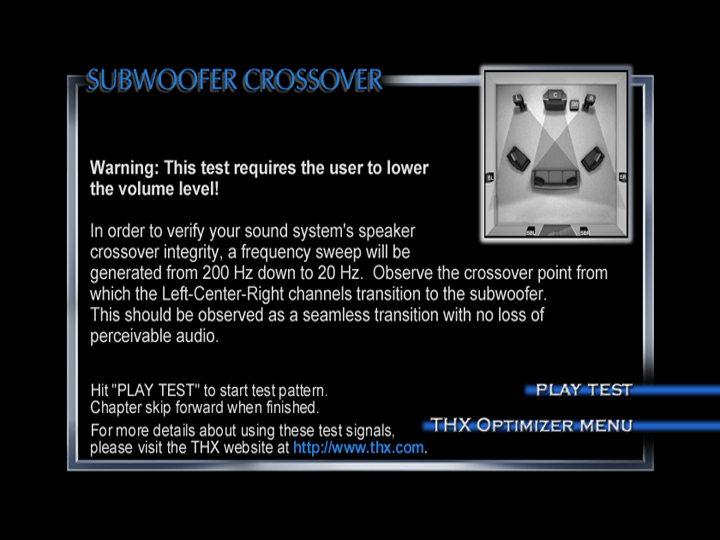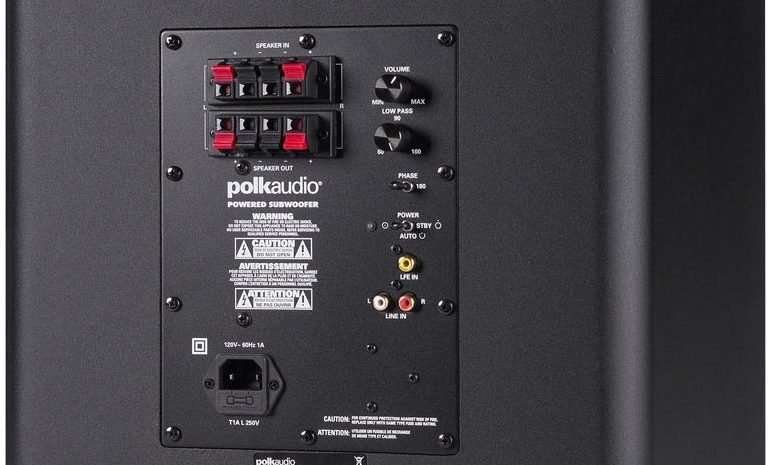Crossover Knob on Subwoofer or AV Receiver: Proper Setting
Getting into AV is confusing. There are so many forums or resources that contain conflicting information. Everyone has an opinion, right or wrong, about the correct procedure for connecting equipment, proper settings, or other things. Take, for example, setting the crossover on a subwoofer. Some will say the best way to set up the crossover is in the AV receiver, while others will adamantly argue that the crossover dial on the subwoofer is the only way to set it properly. Who is right? Should you use the crossover knob on your subwoofer, the setting on the AV receiver, or is some combination proper? Let’s discuss.
So What is a Crossover?
Crossovers come in a few flavors. First, there is a crossover circuit within your speakers. This crossover is passive, almost always unadjustable, and sends different sounds to the appropriate driver within the speaker. This crossover protects your speakers by sending the suitable frequency to the correct type of speaker driver.
The second type is an electronic filter circuit within your AV receiver. This crossover generally deals with low frequencies. For any speaker that is designated as “small,” it splits off the low frequencies and sends them to the subwoofer designed for those sounds.
The last one, which tends to add confusion, is the crossover setting knob on the back of the subwoofer. This knob allows you to set the crossover at the subwoofer. It filters out any frequencies ABOVE the crossover setting so that the subwoofer is only playing the lowest notes. The subwoofer usually has adjustments from 40-140hz, and a lot have an LFE setting. The LFE setting disables the crossover so that the subwoofer plays any frequency it receives.
But Which One Should I Use?
The question is which is the proper crossover setting – the one on the AV receiver, the knob on the subwoofer, or some combination? The answer is (almost) always to use the AV receiver. The knob on the subwoofer should be set to LFE or turned up as high as it will go. The reason is simple: For the knob on the back of the subwoofer to be useful, you’d need to send ALL of the sounds to it. The crossover would need to filter out the lowest sounds and then send the rest back out to your speakers. There are exceedingly few subwoofers that can do this for stereo content, and none that can do it for surround.
No, the proper place for the crossover is not the knob on the back of the subwoofer, but the setting in the AV receiver. Most AV receivers have the ability to not only set a global crossover that affects every speaker (essentially what the subwoofer knob can do), but also set different crossovers for different speaker pairs. If you have more capable front speakers, you may want a lower crossover for them as compared to your smaller surround speakers. This allows your front speakers to play lower while protecting your surround speakers from frequencies that may potentially damage them.

What About a Combination of Both?
This is a common concern. People hear that the recommended crossover setting for speakers is 80Hz. That is generally true. But then they see a crossover setting in the AV receiver and a knob on the back of the subwoofer and wonder if the proper method is to adjust both to the same setting. This is actually very wrong and the logic is fairly simple.
A crossover is not a brick wall. We talk about how an 80Hz crossover will send all the sounds lower than 80Hz to the subwoofer. But, in reality, there is a slope (we talk more about this here). Some of the frequencies above 80Hz are played by your subwoofer and some of the lower are played by your speakers. If you set both the AV receiver and subwoofer knob to 80Hz, those crossovers are doubled. We call these “cascading crossovers.” What it means is that your subwoofer will get quieter above 80Hz faster than either crossover expects (and your speakers quieter lower than 80Hz). This will create a dip in your frequency response around the crossover region. You should never use both crossovers.
But I Read An Article/Watched A Video That Said…
Here is what you need to understand. Things change. AV advice changes as new technologies become available and new features are invented. Using the subwoofer knob made sense when AV receivers were less capable and all our content was stereo. It makes much less sense now.
A decade ago, most audiophiles would never have added a subwoofer to their system. They would (and still often do) argue that a “good speaker” should be able to reproduce the correct bass. Guess what? A lot of audiophiles now advocate for adding subwoofers. And those that don’t? Well…don’t worry about them.
So yes, at one point, the subwoofer dial was the best way to set a crossover because it was the ONLY way. But things have changed, and we have better and more accurate ways of doing it now.
When Should I Use The Crossover Dial?
I did say that you should almost always use the AV crossover. That means that there are some instances where it is the only option. For example, the crossover dial is the correct solution if you have a vintage receiver (or a modern receiver – they exist!) that has no bass management or room correction software. For example, my first AV receiver (1995) had no subwoofer pre-out and no room correction/bass management. So the only way to set the crossover on my active subwoofer was with the dial.
This also often comes into play with “audiophile” gear. They want so few features that might “color” the sound that they’ll often create and buy gear that can’t do bass management. In those cases, the subwoofer crossover knob is the only crossover available.
Our Take
We agree that there is a lot of confusing information out there. Folks tend to take anything they read online as gospel or rely on old advice that has since become outdated. With most AV receivers sporting very capable bass management, the subwoofer crossover knob has really become obsolete. It is a relic of the past that is only still around because manufacturers are afraid of the backlash from the community if they remove it from their subs.
I am pretty confident in recommending that you use the settings in your AV receiver to set your subwoofer crossover. Any reputable subwoofer manufacturer would agree. You’ll get better integration between your speakers and your subwoofers, better protection for your smaller speakers, and better sound.



I think Rel should read this article! Unless there is something special about their subwoofers???
There is something special about the marketing of their subwoofers.
Thanks for the article. I do a lot of research and home theater is no exception. There is a lot of static oit there about the crossover controversy.
So now my question…are you saying the low frequency on the back of the subwoofer needs to be at the highest setting (140 or 150)? Then use the AVR as the main crossover source?
I have a Yamaha RX-A6A and i do not believe it has a sub crossover setting in it. Sobin a case like this, what should one do?
Thanks in advance
Yes. Exactly.
Yes, set your speakers to 80hz I also leave the eq off, the manual one, crank your sub dial crossover to the max and you’re in business. I just bought another sub and for the first time ever I had to reverse the polarity ..They sounded like garbage side by side (No other choice of placement) I guess it was the air pressure, I don’t know, but as soon as I flipped the polarity on both of them to 0 they sounded like the monsters they are…